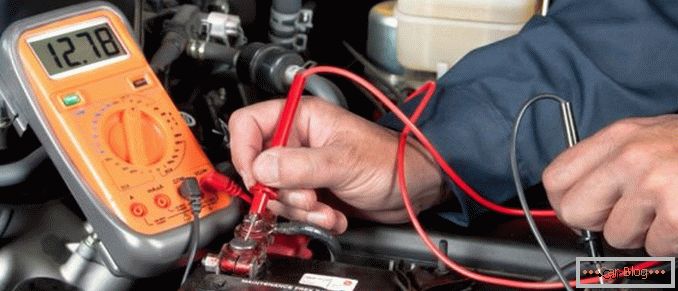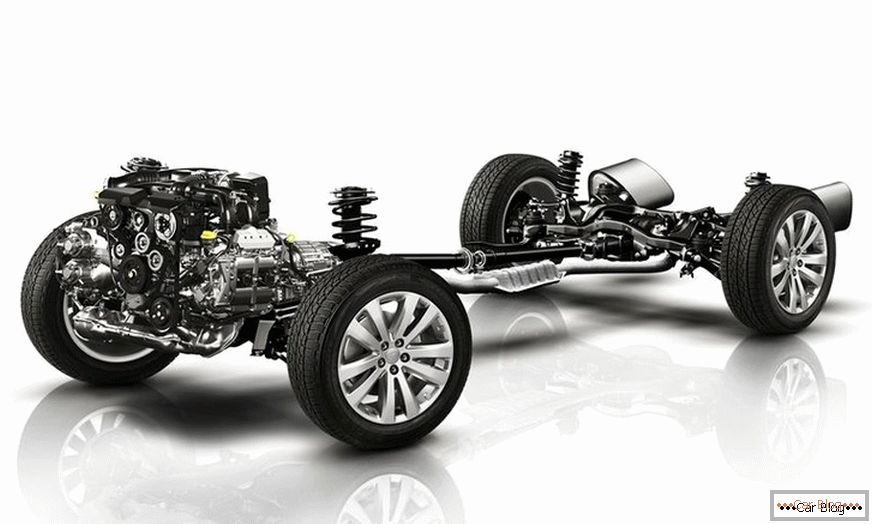The braking system, each car owner must maintain in perfect condition. The quality of its work depends on the safety of all participants in the movement. Therefore, the question of why the front brake discs are heated is quite relevant for drivers with different experience.
Any vehicle must be obedient to its owner, especially for the brake system. So, let's analyze the possible causes of overheating and how to eliminate them.
Content
- 1 Types of brake discs
- 2 Overheating
- 3 The problem with new discs and pads
- 4 Conclusion
Types of brake discs
One of the popular brake systems is the disc design. The effectiveness of such a model is proven in practice and adopted by most popular auto companies. There are several variants of designs in which the material of the disk can be different:
- cast iron;
- forged steel;
- metal ceramics;
- ugleplastik.
The last two varieties are more expensive to use, and therefore are used less frequently, although they are highly efficient. Most often they can be found on sports models.
Initially, let's see if the brake discs should be heated on the car or not. In short - yes, they should. During braking, the brake pads are pressed against the disc from two sides, and friction between the materials arises, as the disc rotates and the pads are rigidly fixed in the caliper. In this case, the kinetic energy (movement) of the car is spent on overcoming friction materials and goes into the heating of brake discs and pads. It is important to understand that the heating of the brake mechanisms is absolutely normal, but it should not be excessive. Also important is not the heating itself, but the degree of deformation after it. During prolonged braking, for example, on a serpentine during descent, severe overheating of the brake discs can occur and, as a result, distort them, which will cause a beating when the brake pedal is pressed. And if you still get into a puddle, a sharp temperature drop can lead to a crack on the brake disc.
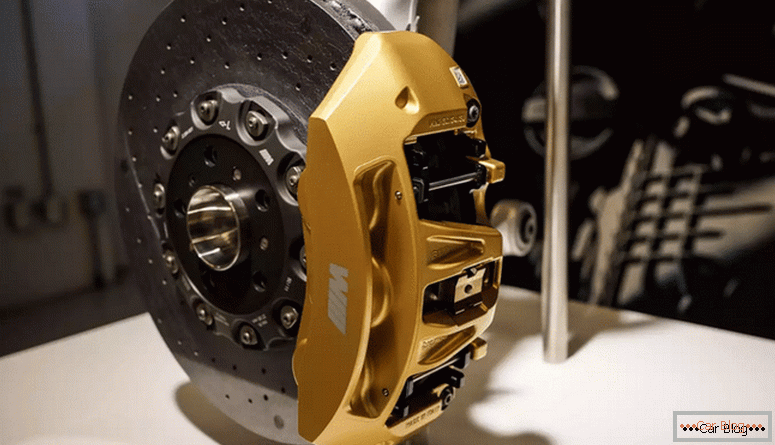
Carbon brake discs
In metal-ceramic products or carbon-fiber, the heating temperature reaches 1200-1400C. At the same time, the friction coefficient is significantly higher; they are also not subject to thermal deformations. The main disadvantage is their price, so in the masses these materials are not used.
See also: Diagnostics of the brake system of the car on the standThe cost of production of metal discs is low, so they are widespread, but the limiting temperatures are 500-600C. Significant overheating leads to loss of geometry and failure due to thermal deformations.
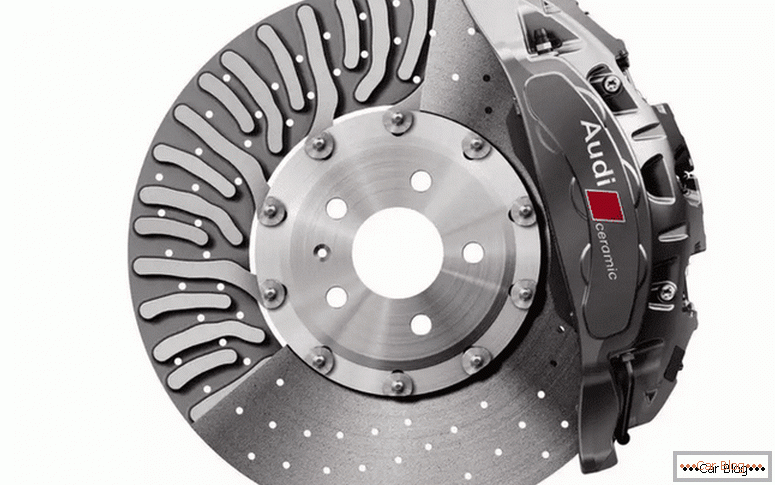
Metal brake disc
Note: A sharp temperature drop can be detrimental to the disks, so in no case should you pour water on them, especially immediately after overheating!
Also, do not wash the car after intensive use of the brakes to prevent water from entering the discs.
Overheating
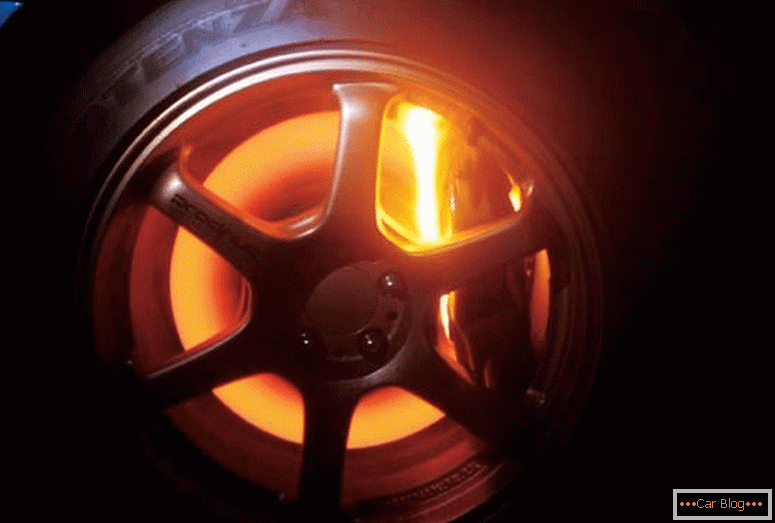
Brake disc overheating
As we have already found out, small heat is considered normal, however, a significant temperature rise without intensive use of the brake pedal should alert the driver. There will be a fault either structural or operational. After all, individual driving style is also included in the list of reasons for heating brake discs. Frequent and sharp pressing the brake increases the temperature of the mating elements of the system.
The main reasons why overheating occurs, and how to get rid of them:
- wedged brake caliper guidespads can not evenly clamp the disk (it is necessary to check the condition of rubber glands and the presence of grease on the rails, the absence of sand and dirt on them);
- the disk is deformed, and the pressure of the pads is uneven throughout the entire plane (a disc groove or a complete replacement is necessary);
- фрикционные накладки have developed their own resources and do not provide a satisfactory coefficient of friction (low-quality linings need replacing);
- different braking systems in front - disc, and in the rear - drum leads to overheating of the front, due to structural features (installation of ventilated brakes or correction of driving style).
Visually, it is possible to distinguish overheated metal surfaces by their residual color after exposure to temperatures.
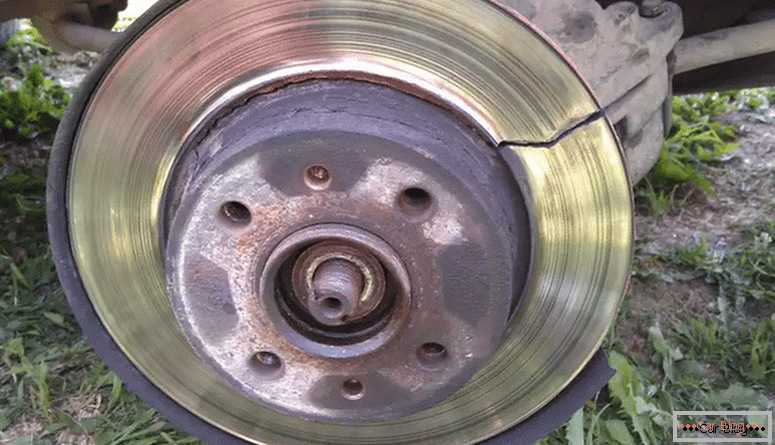
Warped disc
The parameters will be approximate, but they will give an idea of the characteristics of overheating, which can lead to dangerous deformation:
- appeared yellowish tint - sign of overheating to 160-280WITH;
- bluish color talks about rising to 300-450WITH;
- blackening surface possible at 450-500WITH.
If such colors were noticed, then it is necessary to conduct, in addition to visual diagnostics, a more serious test at the station or independently on the viewing well. Sometimes it is enough to use a jack.
The problem with new discs and pads
Бывают ситуации, when the brake discs get warm after replacing the pads. Почувствовать это можно по характерному пригорелому запаху, возникающему после резкого торможения особенно на высокой скорости. Не попадать в такую ситуацию помогут некоторые правила:
- With discs required remove all preservative grease. Even if it is not immediately visible, then it is advisable to degrease the surface, because otherwise, grinding will take a lot of time.
- Place on the hub for a new disc necessarily brushed with a metal brush. The procedure will help get rid of debris and not skew the plane relative to the axis of the wheel.
- Caliper fingers and cavities for them remove all old grease. New lubricant should be only special, and not the usual grease. Otherwise, the structure may be wedged at the wrong time.
- After assembling on the jacked side, it is required to rotate the wheel by hand. One must rotate without problems. A slight rustling of the pads is allowed. If it was done a couple of turns and the wheel was wedged, then the assembly went wrong.
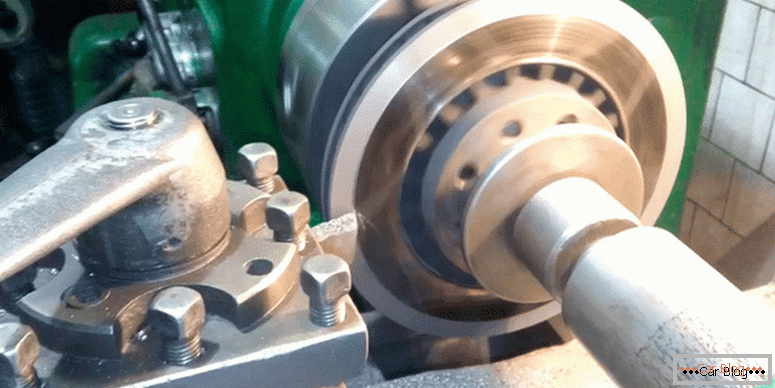
Elimination of deformation using grooves
Possible reasons for clamping may be:
- the caliper piston and the inner block were not aligned (the block has a notch that must be aligned with the same element of the piston; otherwise, a misaligned appearance will appear);
- problem with the installation of the fingers or the wrong grease for them;
- The landing zone for the friction linings must be cleaned of debris with a brush, and high-temperature grease is applied to this place to prevent sticking of the linings.
Conclusion
Most of the reasons why disk overheating can be eliminated by yourself. Most often this is due to performance and driving style. Accordingly, it is necessary to regularly monitor the condition of the pads and discs: time to grind the surface, change the pads before the gnash starts from erasing the mounts on the disc, and also install high-quality components.

